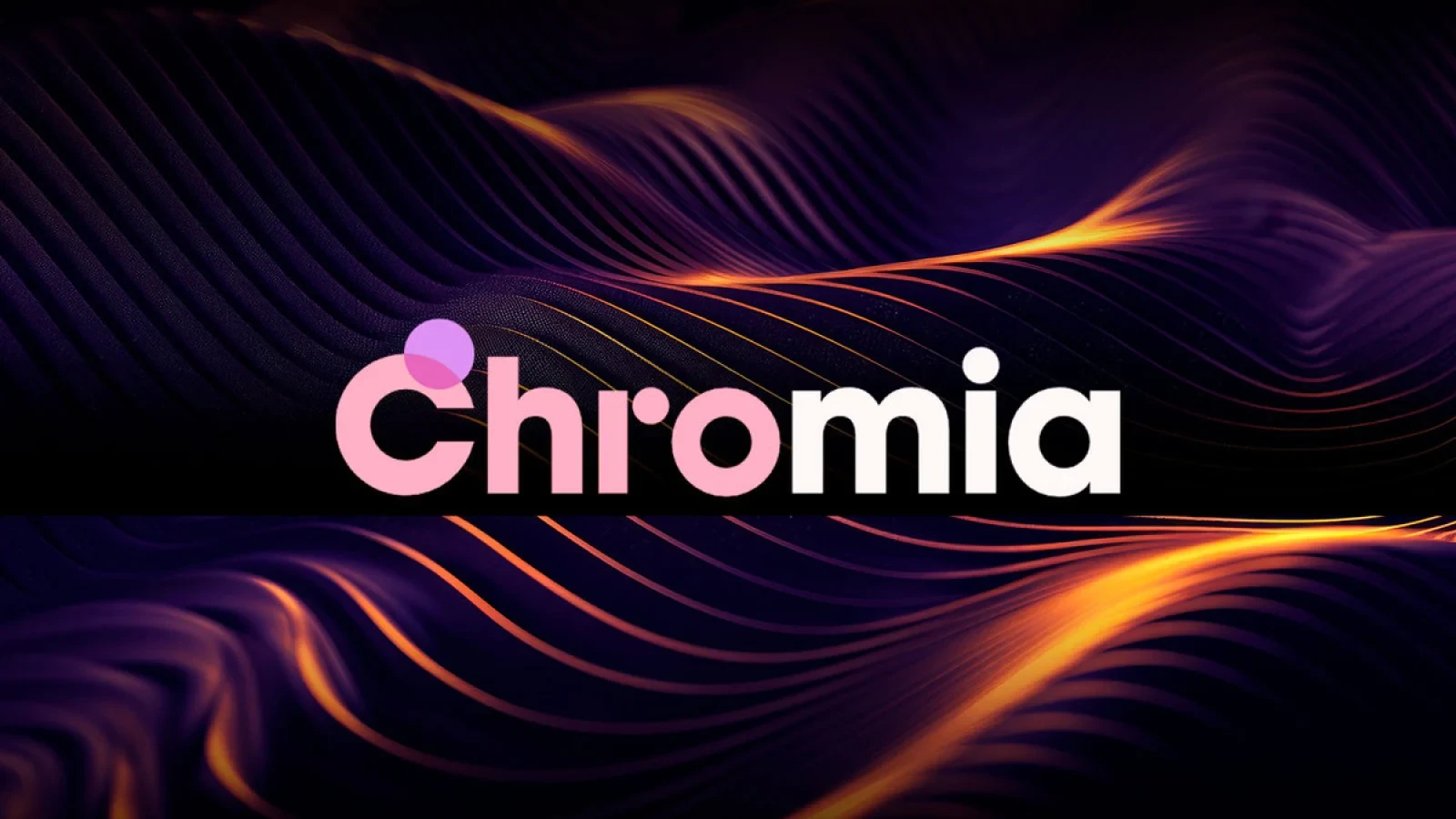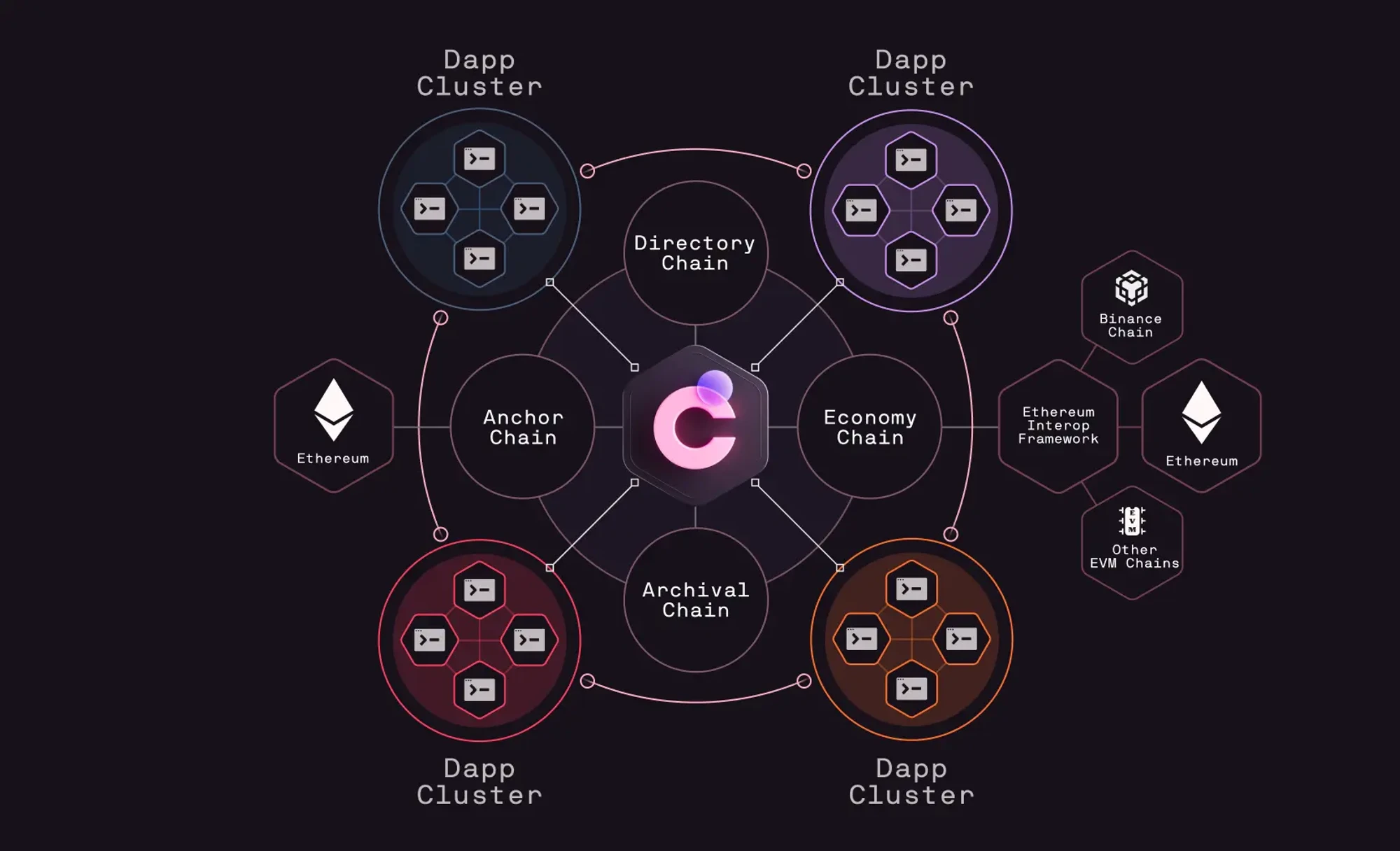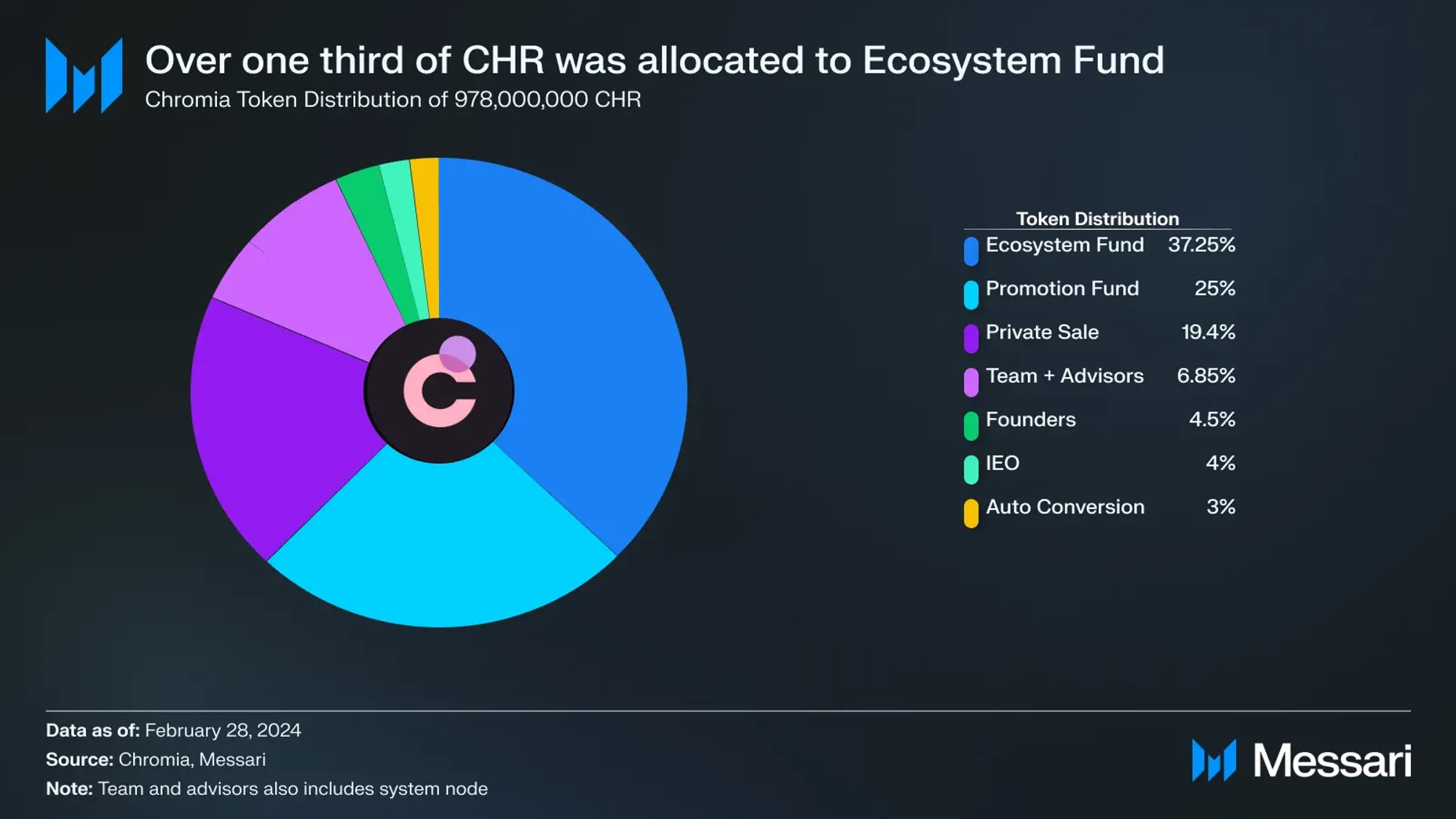
Overview
Chromia is a data-centric Layer 1 platform that aims to optimize and achieve high-performance AI and gaming applications through horizontal scaling to handle parallel tasks.
Chromia is set to launch its mainnet in the early third quarter of 2024 and has recently integrated with AI-driven gaming studio Ultiverse.
Applications built on Chromia will run in the form of sidechains, and Chromia's database-centric approach is well-suited for applications requiring complex queries and indexing.
Project Introduction
As Ethereum's gas fees continue to rise, various Layer 1 alternative solutions with scalability optimization as their goal continue to emerge. Chromia utilizes a relational database to achieve efficient data storage and retrieval, serving as its differentiating competitive point.
Similar to Ethereum's adoption of a modular approach to address its shortcomings, the design space for Layer 1 alternative solutions has significantly expanded. The integration and modularization strategy provide a diverse selection of functionalities and performance for application and development. Chromia is positioned as a modular blockchain data query platform, attracting gaming and AI projects through intensive data processing and computational capabilities.
Project Background
Chromia was created by Chromaway, a Swedish company, in 2019. The founding team of Chromaway has a deep foundation in the crypto field and has been involved in related areas since the birth of Bitcoin, including individuals such as Or Perelman, Henrik Hjelte, and Alex Mizrahi. Mizrahi made early contributions to the concept of PoS consensus mechanism and colored coins.
Former Defiance Capital executive Yeou Jie Goh recently joined the Chromia team as the head of the Asia-Pacific region.
Chromia's 2019 funding was led by Arrington Capital, and its 2018 seed round was led by TGE Capital. All private placements and investor tokens have been released.
Technology
Chromia separates the settlement layer and execution layer to achieve modularity, using a relational database as its information storage structure, while Ethereum utilizes an account model.
Postchains
Postchains are the most important innovation in Chromia's design. Postchains are designed to store data in a relational database, including blockchain metadata and application state. Additionally, they allow a single database to host multiple blockchains and enable one blockchain to access another blockchain's data after data submission. This approach allows chains to conveniently query shared data to simplify interactions between blockchains, reducing complexity.
ICMF and ICCF
Chromia utilizes two protocols, ICMF (Inter-Chain Messaging Facility) and ICCF (Inter-Chain Confirmation Facility), to send data between chains.
ICMF uses an anchored hierarchical structure to send messages across chains and facilitate various internal cross-chain communications, including managing application updates. It supports publishing messages to a topic on a chain and allows other chains to subscribe to any message on that specific topic. ICMF uses the anchored hierarchical structure as a communication channel, ensuring the final delivery and order of messages, enabling chains to communicate even across different clusters.
ICCF also uses an anchored hierarchical structure but is responsible for constructing transaction proofs. Once constructed, the proof is submitted by the client to the receiving blockchain, which then uses the anchored structure for verification. While ICCF is faster and more efficient, it requires client interaction and may encounter failure issues. In such cases, ICCF needs to recreate and resubmit the proof. ICCF proofs are used for cross-chain transfers and are implemented in Chromia's FT4 token standard.
These two protocols allow developers to use PostgreSQL for data storage and querying to optimize the development process. The traditional virtual machine architecture is incompatible with Chromia's relational data model because it requires encoding queries. To address this issue, Chromia adopts the relational language Rell for programming. Rell is designed similar to Python and Kotlin, aiming to reduce the learning curve for developers and promote adoption and transition.
Consensus
Every application on Chromia has its own blockchain, which is operated by a set of nodes using eBFT. Each blockchain in Chromia is associated with a set of validators and hosted on a set of nodes responsible for achieving consensus on all modifications to the application state. Individuals or organizations can run nodes called service providers (Providers) and run Chromia software on the nodes. Chromia currently has four clusters, with a group of network nodes collectively running the same blockchain. The actual throughput and scalability of the network will be determined at the launch of the mainnet. The current appnet data is:
Confirmation time of approximately 1 second;
Each sidechain has over 500 TPS;
Over 100,000 updates and reads per second.
Chromia has internally tested three clusters with a TPS of approximately 33,000, and the team has stated that the network can linearly scale with an increase in the number of clusters.
Chromia achieves horizontal scaling by dividing its architecture into multiple blockchains, with each node processing data only for its designated chain. This pattern ensures that updates on one chain do not affect another, enhancing scalability and effectively creating an overall "system" blockchain, which is the core of Chromia's architecture. The components of the system chain include:
Directory Chain tracks all service providers, nodes, application chains, and their validators.
Economy Chain tracks token allocation, applicable only to CHR.
Anchoring Chain defends against attacks on certain nodes. It also records block hashes of other chains, aiding in detecting consensus failure issues. Chromia has a cluster anchoring chain that anchors all chains upstream from the original chain.

Therefore, applications built on Chromia will run as sidechains, and this database-centric approach is suitable for applications requiring complex queries and indexing. In this model, applications pay nodes for hosting services. This setup aims to support developers in determining their configuration details based on the resources allocated to the application. Nodes seek to earn fees for providing services to servers, regardless of the specific functionality of the application. However, this approach may lead to inefficiencies: the even distribution of computational resources among nodes may result in some nodes being underutilized while others reach capacity limits.
Chromia addresses this issue by introducing various nodes tailored to specific needs (including application requirements, service provider capacity, and hardware availability). This flexible design allows applications to adjust hosting fees according to their unique requirements. In the Chromia ecosystem, hosting fees and transactions use CHR as the standard token.
Token Economics
The network initially created 10 billion CHR tokens, and in May 2020, 22 million tokens were burned, resulting in a current total token supply of 9.78 billion.

The complete allocation is as follows:
37.25% allocated to the ecosystem.
25% allocated to the promotion fund.
19.4% allocated to private sale investors.
4.5% allocated to the founders.
4% for initial liquidity.
3% allocated to the automatic conversion contract.
2.93% allocated to the team.
2% allocated to Chromia's system nodes.
1.92% allocated to Chromia advisors.
CHR was initially issued in ERC-20 form, and after the launch of the Chromia mainnet, it will be converted into Chromia's native token. The current FDV of CHR is $186 million, with a token price of $0.23.
The remaining tokens include 9.4 million for the founders, 57.1 million for promotional activities, and 16.5 million for the automatic conversion contract. These will be activated at the launch of the mainnet and unlocked monthly until December 2024. Chromia tokens have several key functions in the Chromia ecosystem:
Used by DApps to pay hosting fees and as node rewards, similar to Ethereum's payment of transaction fees to block producers.
Serves as the primary currency in the Chromia economy.
Users can stake CHR tokens to earn rewards, enhance network security, and service providers can use their staked tokens for governance.
Network Activity
Chromia requires service providers to stake CHR to incentivize them to protect the network. CHR is used as collateral and will be confiscated in case of improper behavior by nodes. All users can stake Chromia tokens to receive a 10% annualized governance reward (the future staking rate may be adjusted). Users can participate in staking using wallets like MetaMask, and staking can be done on the Ethereum mainnet or the BNB Chain, with staked CHR tokens being frozen for two weeks. Additionally, all applications wishing to be hosted on the Chromia testnet must stake a minimum of 100 CHR.
In January 2024, the team introduced a delegation mechanism. Chromia added new service providers to enhance the responsiveness of the staking interface. After the update, the provider list will be dynamically populated in real-time by accessing the directory chain, ensuring the real-time nature of potential representatives. At the time of writing, 28% of circulating CHR tokens have been staked natively.
The current network is still in the testnet phase, with seven online applications, twenty service providers, and twenty-six active nodes on the appnet. The most popular application on Chromia is My Neighbor Alice, a fully on-chain multiplayer game that combines digital farming, NFT trading, and community, all built entirely on Chromia. Since its launch in January 2024, My Neighbor Alice's Alpha Season 4 has completed over 1.8 million transactions.
Another application on Chromia, Fanzeal, is a digital collectibles market related to the German football club Stuttgart. It aims to bring sports and entertainment onto the blockchain. Additionally, Chromia has partnered with multiple gaming studios in preparation for the upcoming mainnet.
Roadmap
In terms of positioning, Chromia is evolving into a crypto gaming hub. On the technical front, Chromia launched a block explorer, EVM cross-chain bridge in the fourth quarter of 2023, and ultimately finalized its Chromia CLI to simplify the deployment of Rell-based applications.
Chromia will introduce the economy chain, a system chain parallel to the directory chain and anchoring chain. The economy chain aims to achieve several key objectives. Firstly, it will support native fee applications, allowing the leasing of containers using CHR tokens, simplifying the allocation of fees paid to network providers. Additionally, the economy chain will serve as the primary channel for the official bridge, facilitating the transfer of CHR tokens between Ethereum and the BNB Chain. It also plays a crucial role in the circulation of CHR tokens, serving as the entry point for tokens entering the ecosystem from the Chromia side.
Before its mainnet launch, Chromia faces two key challenges: implementing a native fee system to compensate network providers in CHR tokens and ultimately completing the integration of its FT4 token standard cross-chain bridge to support native CHR transactions.
In February 2024, Chromia also announced a strategic partnership with RSTLSS, a platform that allows users to easily design personalized digital assets. The collaboration aims to make digital creation accessible to everyone. Chromia will streamline the application experience, while RSTLSS will focus on ensuring the usability of its UGC, expanding to users without programming backgrounds. The partnership aims to enhance the Chromia gaming ecosystem through cross-game asset sharing, cross-pollination of intellectual property, and promotion of RSTLSS's innovative tools.
Furthermore, the integration of Chromia with Rell enables relational database query capabilities, expanding the scope of Chromia's applications, including AI and more. In cases where most blockchains struggle to handle high computational demands, Chromia's efficient data storage and retrieval system provide effective tools for developers.
Conclusion
Based on its relational database principles and modular architecture, Chromia aims to establish itself in Layer1. The Rell programming language introduces data storage capabilities, enabling comprehensive on-chain data management directly on the network.
As AI and gaming gain increasing prominence, the Chromia mainnet will come into play. Chromia's current market value is approximately $180 million, lagging behind Beam and ImmutableX, which are valued at $710 million and $1.87 billion, respectively. Chromia will achieve its goals through more customized and practical application integration solutions.
免责声明:本文章仅代表作者个人观点,不代表本平台的立场和观点。本文章仅供信息分享,不构成对任何人的任何投资建议。用户与作者之间的任何争议,与本平台无关。如网页中刊载的文章或图片涉及侵权,请提供相关的权利证明和身份证明发送邮件到support@aicoin.com,本平台相关工作人员将会进行核查。




